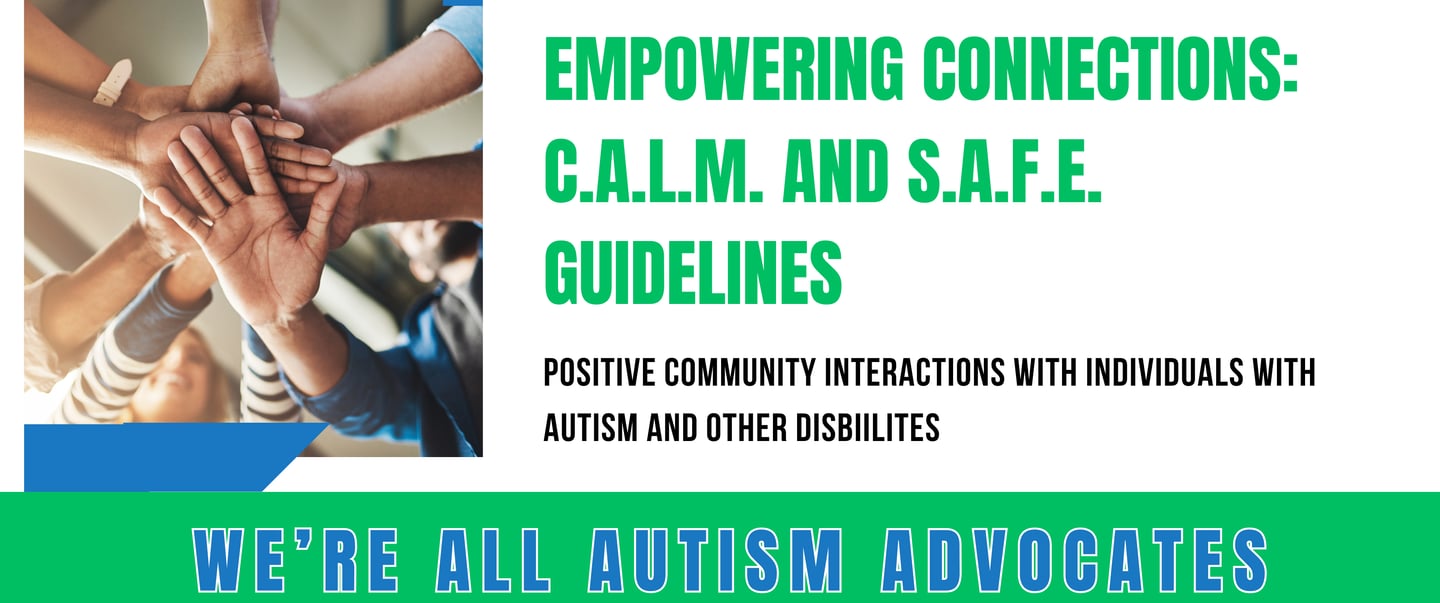Welcome


Creating a C.A.L.M and S.A.F.E Community: Bridging Gaps in Communication with Autism Awareness
EVERY PIECE MATTERS
By: MaSheeka Bone
Understanding C.A.L.M and S.A.F.E
In today’s diverse society, it is essential to establish effective communication channels among community members, especially when interacting with individuals with autism. This is where the C.A.L.M (Calm, Assess, Listen, Modify) and S.A.F.E (Safe, Ask, Follow, Explain) acronyms come into play. These frameworks are designed to create a safe and supportive environment that promotes understanding and positive interactions.
The Importance of Effective Communication
Effective communication is vital in various settings, from grocery stores to schools and hospitals. For police officers and community employees who regularly engage with individuals on the autism spectrum, adopting the C.A.L.M approach ensures that their communication is clear and considerate. By integrating principles of awareness, listening, and management, these professionals can create an atmosphere conducive to understanding and cooperation.
Additionally, the S.A.F.E framework emphasizes the need for support and education. By equipping community members with the knowledge about autism, we can facilitate smoother interactions and reduce the likelihood of misunderstandings. This support extends beyond just the officers and employees; it involves a collective effort from all members of the community.
Promoting Inclusivity Through Awareness
Promoting awareness of autism among grocery store staff, healthcare professionals, and educators can greatly enhance interactions with individuals who may have unique communication styles. Acknowledging the specific needs of individuals with autism not only improves day-to-day transactions but also instills confidence in those individuals and their families when engaging with public services.
Moreover, implementing training programs within community organizations geared toward the principles of C.A.L.M and S.A.F.E can elevate the overall understanding and awareness. Such initiatives advocate for patience, compassion, and adaptability, allowing community members to engage effectively and inclusively. The long-term goal is to encourage all community members to foster a more inclusive environment where individuals with autism feel understood and respected.
In conclusion, the integration of C.A.L.M and S.A.F.E principles is fundamental in ensuring positive interactions between police officers, community employees, and individuals with autism. By promoting understanding and awareness among all community members, we can significantly contribute to creating a safe, supportive environment for everyone. C.A.L.M and S.A.F.E are not just acronyms; they represent a commitment to inclusivity and understanding in every facet of community life.
EMPOWER
Acceptance
Awareness
info@unspokenlove.org
256-682-8523
Unspoken Love © 2021. All rights reserved.
Supporting individuals with autism to reach their full potential.
